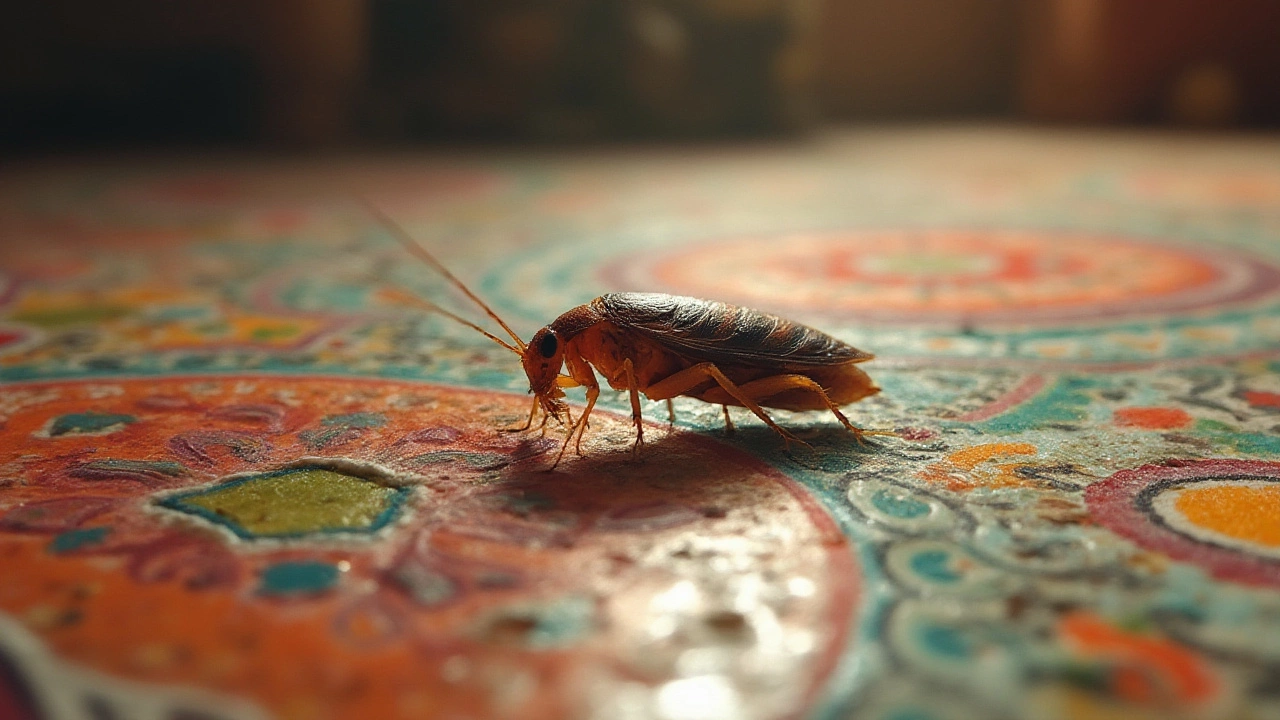Here’s a nightmare no homeowner wants to replay: you nuke your house with every cleaner on the shelf, set out traps, scrub every surface, and somehow, you still wake up with a creepy crawler by your coffee cup. As someone who’s dealt with his fair share of invaders, I can tell you—some pests laugh in the face of sprays, powder, and good intentions.
The Unbeatable Champion: Which Pest Wins the Title?
If you survey the battlefield that is the average home, you’ll see plenty of opponents: cockroaches, ants, termites, mice, silverfish, fleas, even wasps. All bad news, sure. But according to experienced exterminators and academics in urban entomology, there’s one pest that earns the title of the hardest household pest to get rid of: the bed bug (Cimex lectularius).
Bed bugs are surprisingly hardy. They hide in places as thin as a credit card, feed on you while you’re most vulnerable (asleep), and can survive months without food. Even world-class pest pros sweat under the pressure of a stubborn bed bug infestation. Take this little stat: a 2015 survey by the National Pest Management Association ranked bed bugs above cockroaches, termites, and rats as the most difficult pest to eradicate, with over 75% of professionals agreeing.
You may wonder, what makes them so unbeatable? Bed bugs are tiny, masters of hide-and-seek, and their eggs are nearly impervious to many common chemical treatments. Plus, they aren’t lured by crumbs like roaches or rats, so simple cleanliness doesn’t cut it. They’re Olympic-level hitchhikers, clinging to backpacks, luggage, or clothes, popping up in luxury hotels and rundown apartments alike. They don’t always announce themselves with a bite either. Some people show no reaction, so you could host a full colony before spotting a problem.
The Science of Survival: Why Are Bed Bugs So Tough?
To understand why bed bugs seem to scoff at your pest control efforts, you’ve got to get into their behavior and biology. These guys are patient—so patient, in fact, they can wait up to a year between meals in cool conditions. And their eggs? Coated with a gluey substance, they can stick just about anywhere out of sight, making them hard to spot and kill.
A major problem is pesticide resistance. Over decades, many bed bug populations have evolved ways to survive after exposure to regular insecticides, especially the pyrethroids that used to knock them flat thirty years ago. Labs at Rutgers University have isolated strains of bed bugs that survive doses of chemicals strong enough to kill ten times the recommended size cockroach. That means what worked for your grandmother probably won’t work now.
The way they spread is another nightmare: you won’t find bed bugs hopping all over your kitchen, but you don’t need to. They move from apartment to apartment, or house to hotel, in suitcases, secondhand couches, library books, or even your pant cuff after riding public transit. It only takes a few to build into a nasty infestation. And because they don’t carry disease, most cities don’t have public health teams that step in, leaving homeowners and renters on their own.

Contenders You Might Have Guessed: Roaches, Ants, and More
Cockroaches get a lot of bad press, and not without reason. They spread bacteria, survive weeks without their heads (creepy, yes), and have a taste for just about everything. But they’re usually attracted to food, so tight storage and deep cleaning puts you on their trail.
Termites cause more property damage than fires or storms in the U.S.; they literally eat your house from the inside out. The kicker with termites is that you might not notice until they’ve done thousands in damage. But once a pest control team steps in with baits or treatments, colonies can be wiped out. Termites don’t hitchhike into your mattress. Different league.
Ants also bother millions—with over 700 species in North America alone and some, like the crazy ant, capable of shorting out electrical equipment. Some ant colonies are hard to eliminate without finding and treating the nest. But their Achilles’ heel is their food supply. Cut it off and seal their entry points, and you’re making progress. Same story with fleas and silverfish; both are gross, opportunistic, and persistent, but typically easier to defeat with consistent cleaning and the right targeted sprays.
Here’s a quick look at how a few infamous pests compare in terms of survivability, resistance, and difficulty of total removal:
| Pest | Survivability Without Food | Pesticide Resistance | Ease of Detection | Common Hiding Spots |
|---|---|---|---|---|
| Bed Bug | Up to 12 months | High | Low (especially early stage) | Beds, furniture seams, electrical outlets |
| Cockroach | Up to 1 month | Medium to High | Medium | Cracks, sinks, behind appliances |
| Termite | Up to 2 weeks | Low | Low (until damage is obvious) | Inside wood, under soil |
| Ant | Varies (weeks for colony) | Low to Medium | Medium | Walls, floors, beneath doors |
The Unexpected Truth About DIY Solutions
Trust me, I’ve tried them all. Essential oils, baking soda, vinegar, steaming—honestly, most quick-fix tips from the internet just shoo small populations or work as a placebo. People burn through hundreds of bucks trying every spray at the store before calling for backup.
For bed bugs, almost no over-the-counter product can break the cycle. You might kill a few instar nymphs (baby bugs) on top of your mattress, but the eggs left behind start the trouble all over again. Even pest pros need several visits and a full-on strategy: combining chemical treatments (including special detergents called desiccants), multiple heat cycles, and regular inspections. A single treatment rarely handles a mature infestation.
Heat is the one thing bed bugs can’t outsmart. Researchers proved that holding infected rooms at 120–135°F (49–57°C) for several hours wipes out all stages—including stubborn eggs. This isn’t as simple as cranking up your home thermostat; professionals use large heaters and fans, sealing each room tightly. Skipping steps or leaving cold spots lets survivors bounce right back. Got a few bugs and need a home remedy? Toss smaller infested items—pillows, bedding, clothes—into a hot dryer for at least 30 minutes. Steam works on visible bugs and eggs, but you’ll need to go slowly and check every possible hiding spot.
If you rent, don’t keep it a secret. The sooner you tell your landlord, the better your legal protection and the easier it is to solve. Some cities now require immediate action—and many building-wide outbreaks started with just one shy tenant who thought they could manage things quietly with DIY tricks. Landlords and property managers, trust me: bring in the pros and demand a heat-and-chemical combo, don’t try to save money with one-time sprays.

Common Myths, Rare Mistakes, and Winning Tactics
The most dangerous feeling with pests is false confidence. Don’t think only ‘dirty’ homes get infested—bed bugs hitchhike into five-star hotels, new office buildings, and luxury condos regularly. I know a guy who got them by borrowing a movie from the library. It only takes a few bugs brought in on a friend’s backpack to start the nightmare, regardless of how much you clean.
Buying used furniture? Inspect every crack before you bring it inside. Look for dark dots (bed bug poop), mini eggs, or shed skins. Hotels with mattress covers aren’t always safe—use a flashlight to check seams and behind headboards. Isolating suitcases is smart. After traveling, throw all your clothes into the dryer on high heat, even if you didn’t wear them. If you use laundromats, bag your stuff tightly coming in and out.
If you suspect bed bugs, avoid moving items between rooms. Call a pro for an inspection—they use special detection tools and even dogs trained to sniff out bugs. Don’t rely on bug bombs; those actually drive bed bugs deeper into your walls where sprays can't reach.
If your home is a hotbed for roaches, stay vigilant with trash storage and keep food sealed. Caulk every crack and replace old cardboard with plastic bins. For ants, find and destroy outside nests if possible; bait traps work better than sprays, since they bring poison back to the queen.
Think you’re in the clear? Bed bugs can skip a meal for months. So, after a professional treatment, keep monitoring for at least three weeks. Inspect beds every few days and check for new bites. A simple sticky trap under your bed legs can nab a returning wanderer, but the real trick is catching issues early on. Users who stay alert and act quickly always have the edge over even the hardest household pest.

